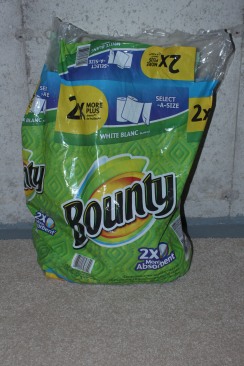
Earth Hour. Are you turning off your lights tonight?
Many lights around the world, bright and dim, will hopefully go out on Saturday March 28th, at 8:30 p.m. in honour of Earth Hour. Earth hour 2015 is slated to be the largest of its kind to date. An event that started in Sydney, Australia in 2007 as an initiative to stand up against climate change, 2.2 million homes and businesses turned their lights off for one hour. This initiative was started by WWF and has now spread around the world with an estimated 7,000 cities in 172 countries participating.
When I first heard of this in 2008, I embraced this, and lit candles around the house and turned off the lights. Each year I tried my best to participate in our home by turning off the lights, and keeping them off for at least one hour or more. I do recall one year when my infant son was not well and we were feverishly trying to look after his ‘fever’, so unfortunately I was not able to adhere at that time, but I made up for it the next day and then some. What I liked about Earth Hour was it felt primitive, disconnected, and it reminded me of travel to third world countries where the power is sometimes out. It puts things in perspective, as we take for granted something so basic such as turning the lights on.
The two main goals of starting Earth Hour, were to reduce energy consumption, but as mentioned above, to stand up for climate change. We live on this earth, we love this earth, but we are responsible for the change in climate. As said by the UN Secretary General, Ban Ki–moon, “Climate change is a people problem. People cause climate change and people suffer from climate change. People can also solve climate change. Earth Hour shows what is possible when we unite in support of a cause: no individual action is too small, no collective vision is too big. This is the time to use your power”.
Some of the most famous landmarks around the world will dim their lights. From the UN building in New York, to the Eiffel Tower, to Rio de Janeiro’s Christo Redentor, to the CN tower, these landmarks will reduce consumption for one hour. Of course it would be impossible for such large landmarks to fully come off the grid for safety reasons, but hey, it is a step in the right direction.
There have been some naysayers who have said that there is no savings of energy, as people make up for it with our excess consumption. Others say that we should look at way’s everyday to look at reducing our consumption, and every day should be Earth Day. I agree. We do need to do our part every day to reduce our consumption on fossil fuels which contribute to global warming. If you think there is no environmental impact from using fossil fuels, please watch the official Earth Hour video below and start at 12 seconds in where you will see the ice breaking.
So, are you turning your lights off March 28th @ 8:30 – 9:30 p.m.? Grab the candles and enjoy the moment.
















